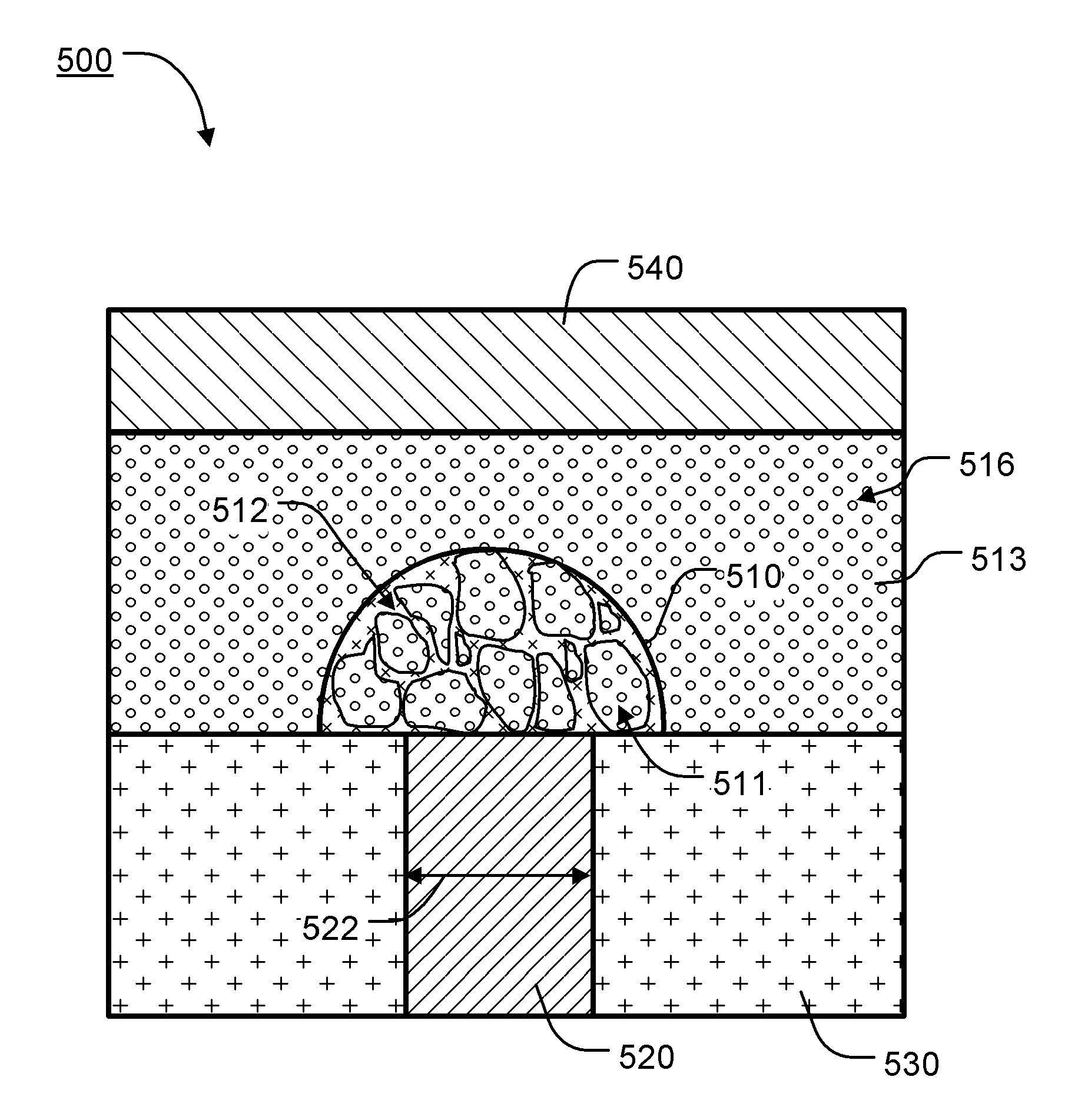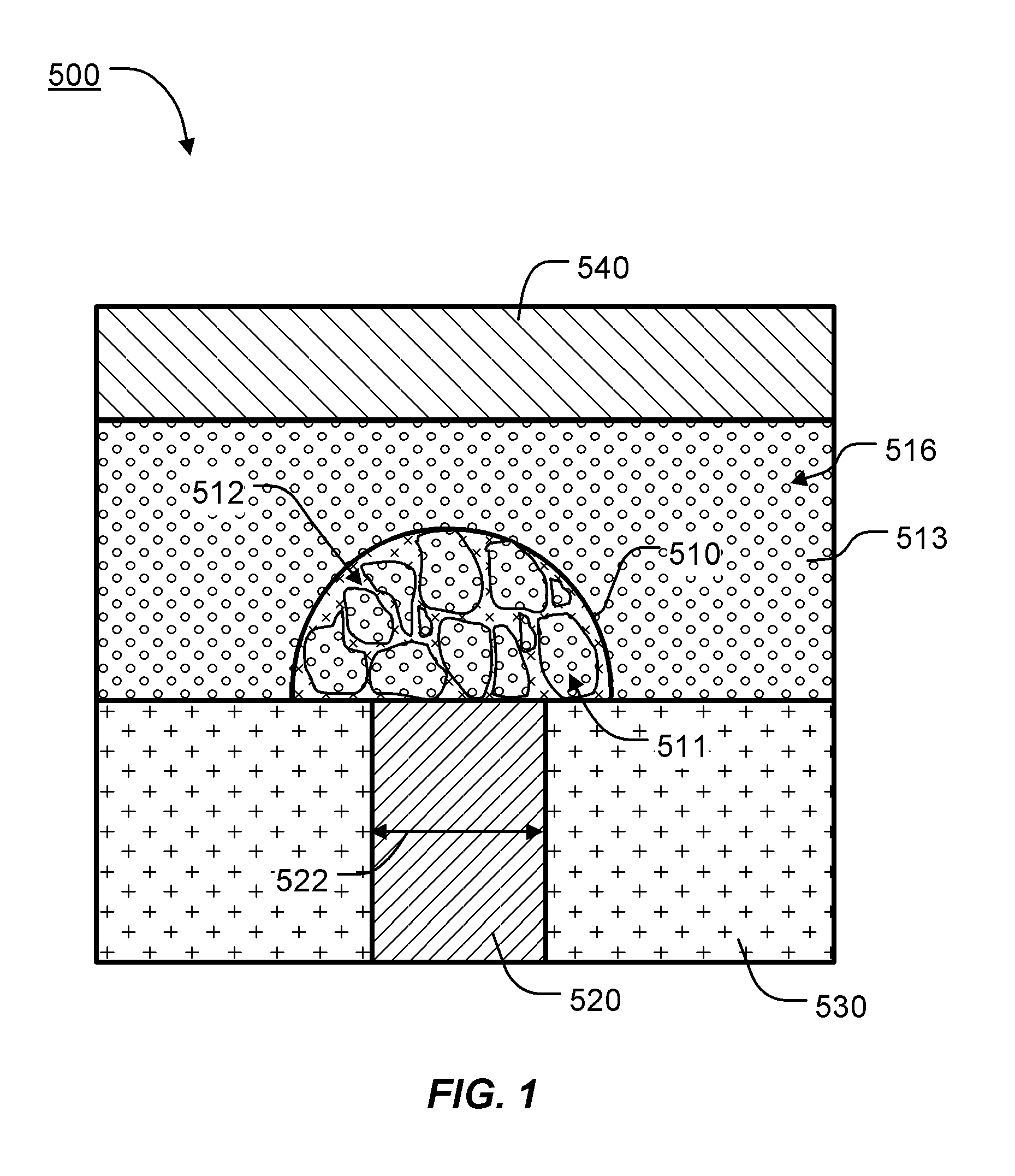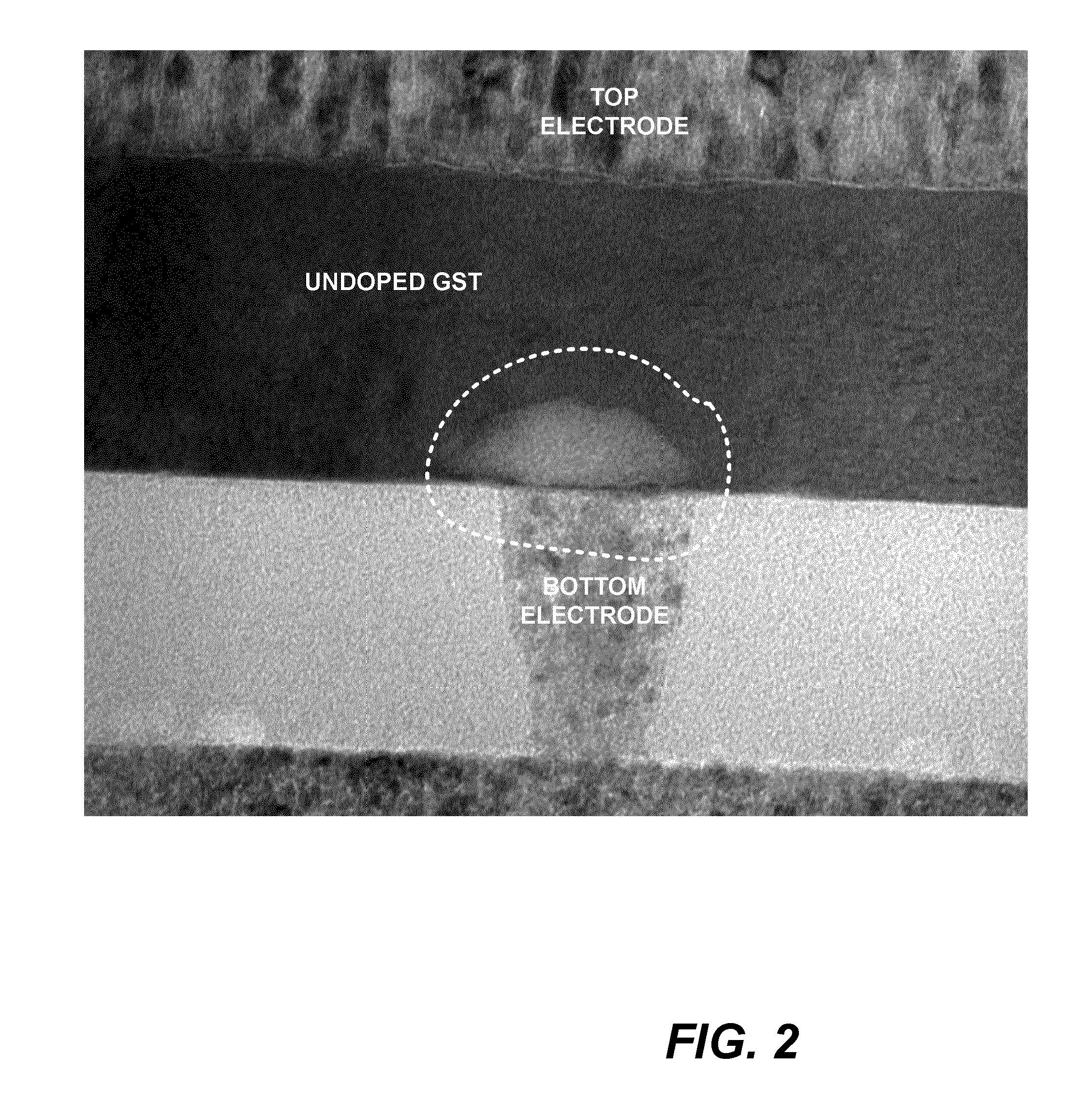Phase change structure with composite doping for phase change memory
a phase change memory and composite doping technology, applied in the field of memory devices, can solve problems such as data errors, memory cells made of phase change materials can fail, and dimension phase change devices involve endurance, and achieve the effect of improving enduran
- Summary
- Abstract
- Description
- Claims
- Application Information
AI Technical Summary
Benefits of technology
Problems solved by technology
Method used
Image
Examples
Embodiment Construction
[0035]A detailed description of the present invention is provided with reference to FIGS. 1-11.
[0036]FIG. 1 illustrates a cross-sectional view of a memory cell 500 having a composite doped active region 510 comprising phase change domains 511 within a dielectric-rich mesh 512 caused by segregation of the first dopant on grain boundaries of the phase change material, and a more stable phase change material having a higher recrystallization temperature in the active region as a result of the second reactive dopant.
[0037]The memory cell 500 includes a first electrode 520 extending through dielectric 530 to contact a bottom surface of the memory element 516, and a second electrode 540 on the memory element 516 consisting of a doped phase change material. The first and second electrodes 520, 540 may comprise, for example, TiN or TaN. Alternatively, the first and second electrodes 520, 540 may each be W, WN, TiAlN or TaAlN, or comprise, for further examples, one or more elements selected ...
PUM
 Login to View More
Login to View More Abstract
Description
Claims
Application Information
 Login to View More
Login to View More - R&D
- Intellectual Property
- Life Sciences
- Materials
- Tech Scout
- Unparalleled Data Quality
- Higher Quality Content
- 60% Fewer Hallucinations
Browse by: Latest US Patents, China's latest patents, Technical Efficacy Thesaurus, Application Domain, Technology Topic, Popular Technical Reports.
© 2025 PatSnap. All rights reserved.Legal|Privacy policy|Modern Slavery Act Transparency Statement|Sitemap|About US| Contact US: help@patsnap.com



